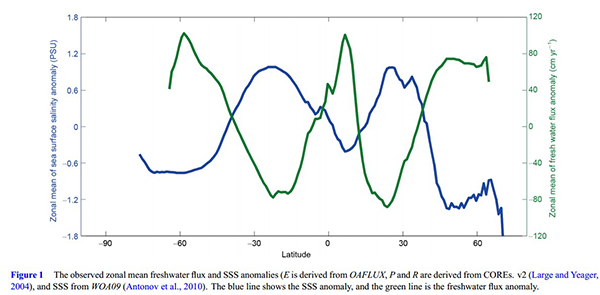最新科研进展
Formulation of A New Ocean Salinity Boundary Condition and Impact on the Simulated Climate of an Oceanic General Circulation Model
Authors:
Jiangbo Jin1, 2, Qingcun Zeng1* ,Lin Wu1, Hailong Liu1, and Minghua Zhang1,3?
1 Institute of Atmospheric Physics, Chinese Academy of Sciences
2 University of Chinese Academy of Sciences
3 School of Marine and Atmospheric Sciences, Stony Brook University, Stony Brook, New York, USA
Abstract:
The salinity boundary condition at the ocean surface plays an important role in the stability of long-term integrations of an oceanic general circulation model and in determining its equilibrium solutions. This study presents a new formulation of the salt flux calculation at the ocean surface based on physical processes of salt exchange at the air–sea interface. The formulation improves the commonly used virtual salt flux with constant reference salinity by allowing for spatial correlations between surface freshwater flux and sea-surface salinity while preserving the conservation of global salinity. The new boundary condition is implemented in the latest version of the National Key Laboratory of Numerical Modeling for Atmospheric Sciences and Geophysical Fluid Dynamics/Institute of Atmospheric Physics Climate Ocean Model version 2 (LICOM2.0). The impact of the new boundary condition on the equilibrium simulations of the model is presented. It is shown that the new formulation leads to a stronger Atlantic meridional overturning circulation (AMOC) that is closer to observational estimates. It also slightly improves poleward heat transport by the oceans in both the Atlantic and the global oceans.
Key words:
OGCM, Surface salinity boundary condition, Virtual salinity flux, Upward salt flux from oceanic surface, AMOC.

Citation:
J.B. Jin, Q.C. Zeng, L. Wu,H.L. Liu & M.H. Zhang (2017):Formulation of A New Ocean Salinity Boundary Condition and Its Impact on the Simulated Climate in an Oceanic General Circulation Model,SCIENCE CHINA Earth Sciences, 60(3), 491-500; doi: 10.1007/s11430-016-9004-4.
